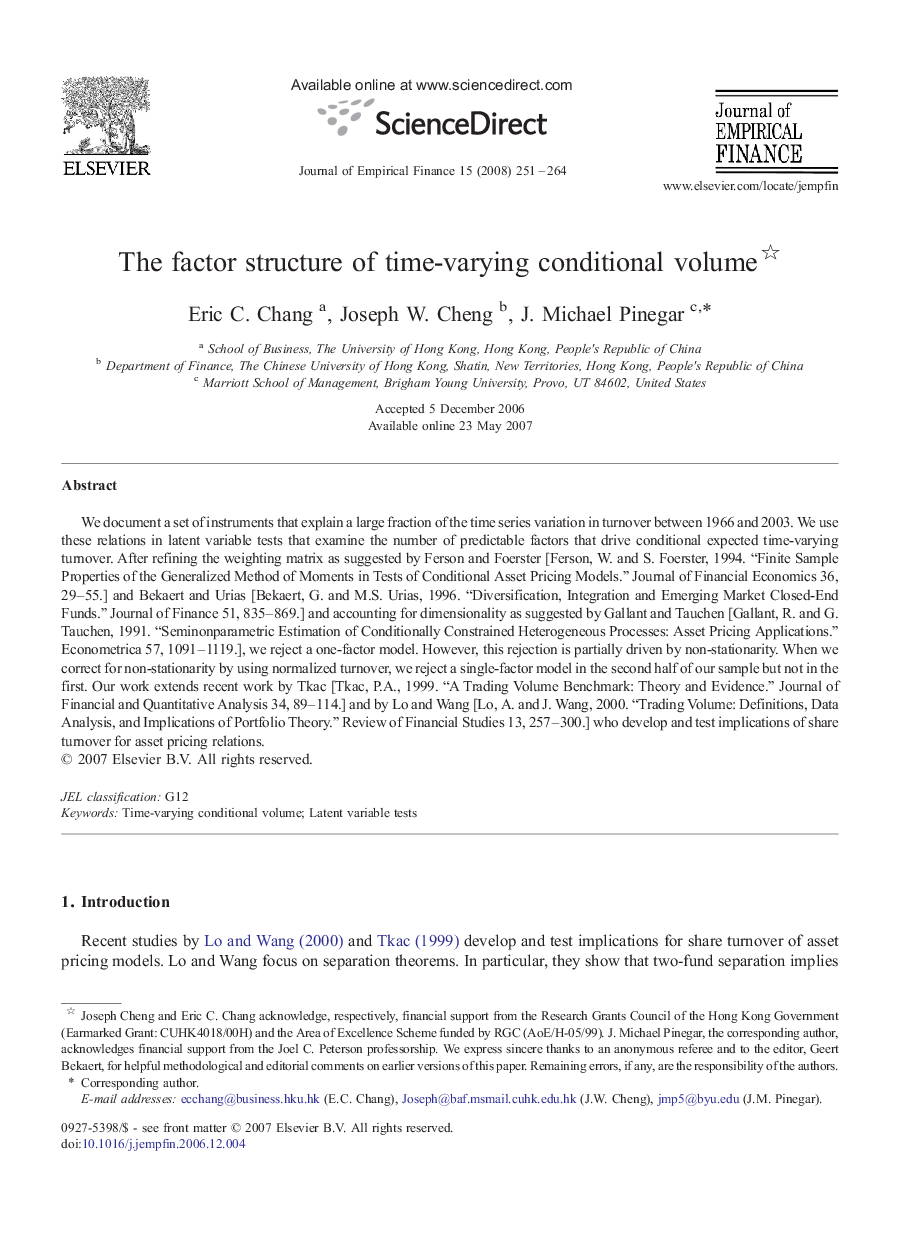| Article ID | Journal | Published Year | Pages | File Type |
|---|---|---|---|---|
| 958512 | Journal of Empirical Finance | 2008 | 14 Pages |
We document a set of instruments that explain a large fraction of the time series variation in turnover between 1966 and 2003. We use these relations in latent variable tests that examine the number of predictable factors that drive conditional expected time-varying turnover. After refining the weighting matrix as suggested by Ferson and Foerster [Ferson, W. and S. Foerster, 1994. “Finite Sample Properties of the Generalized Method of Moments in Tests of Conditional Asset Pricing Models.” Journal of Financial Economics 36, 29–55.] and Bekaert and Urias [Bekaert, G. and M.S. Urias, 1996. “Diversification, Integration and Emerging Market Closed-End Funds.” Journal of Finance 51, 835–869.] and accounting for dimensionality as suggested by Gallant and Tauchen [Gallant, R. and G. Tauchen, 1991. “Seminonparametric Estimation of Conditionally Constrained Heterogeneous Processes: Asset Pricing Applications.” Econometrica 57, 1091–1119.], we reject a one-factor model. However, this rejection is partially driven by non-stationarity. When we correct for non-stationarity by using normalized turnover, we reject a single-factor model in the second half of our sample but not in the first. Our work extends recent work by Tkac [Tkac, P.A., 1999. “A Trading Volume Benchmark: Theory and Evidence.” Journal of Financial and Quantitative Analysis 34, 89–114.] and by Lo and Wang [Lo, A. and J. Wang, 2000. “Trading Volume: Definitions, Data Analysis, and Implications of Portfolio Theory.” Review of Financial Studies 13, 257–300.] who develop and test implications of share turnover for asset pricing relations.
